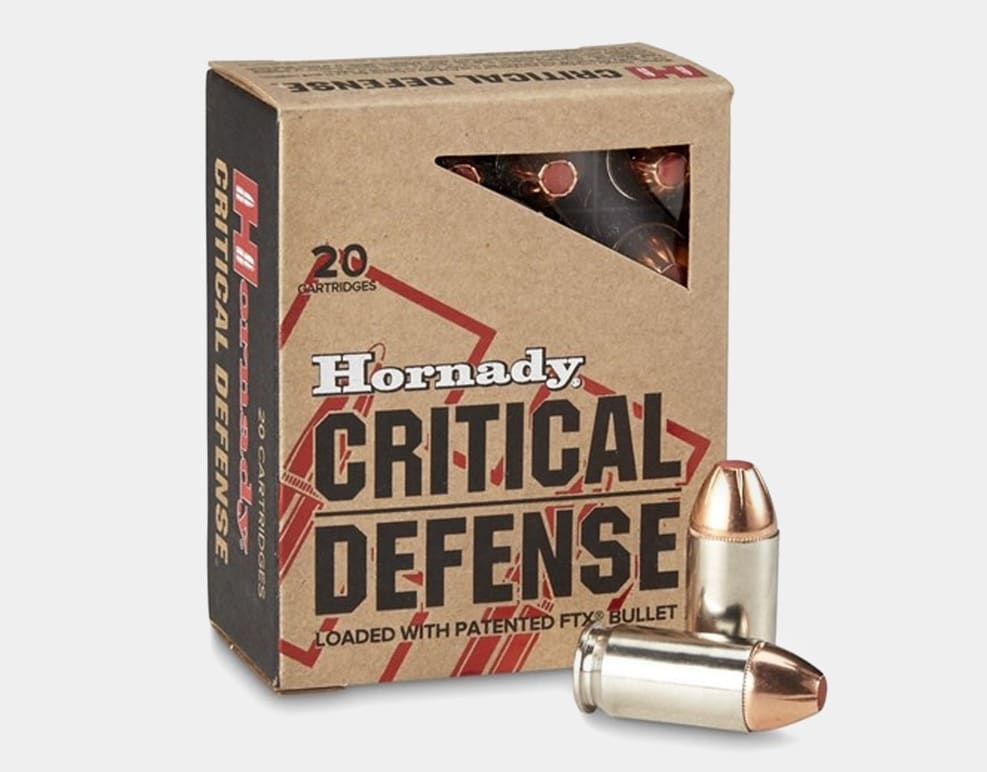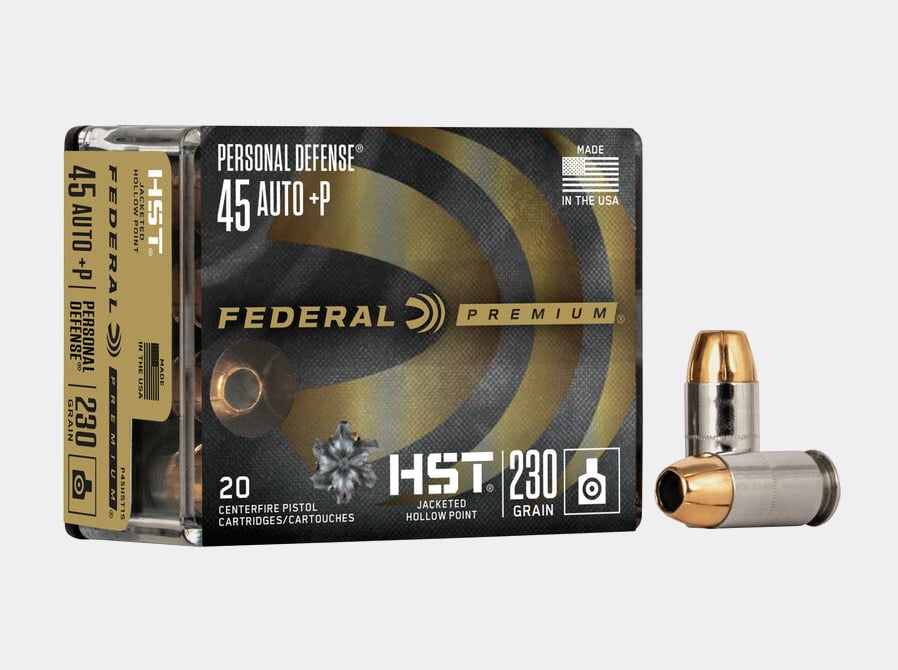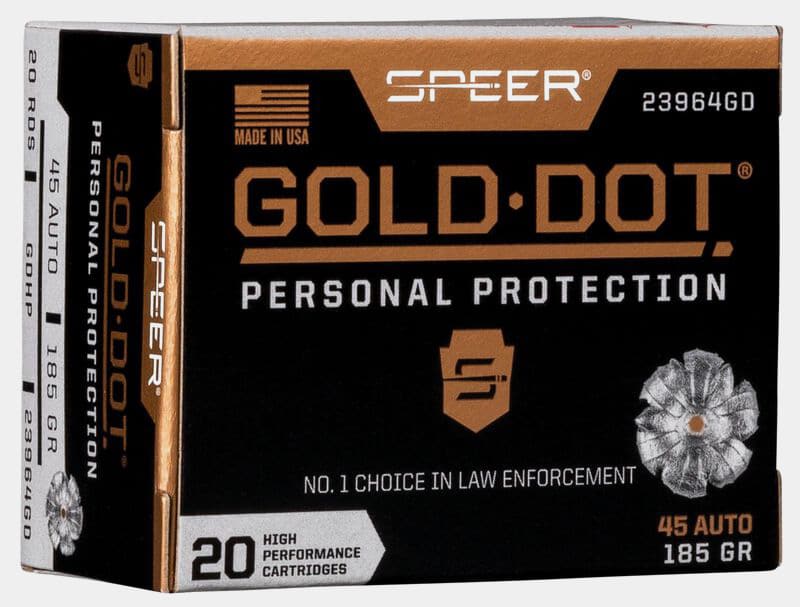Here it is in 2025, and we’re still talking about John Browning’s M1911 pistol. And as I sit here pondering that thought, it sinks in just how amazing that is. A gun design that is 113 years old is not simply still in existence, which would be an accomplishment in itself, but it is a strong competitor at the gun counter. A study of why that might be is a topic for a lengthy article all its own — if not an entire book. I’ll leave that to the capable hands of Massad Ayoob – but I am almost never without an opinion. And in my opinion, humble or otherwise, I think a major reason for this unprecedented longevity is the delicate balance of continuous innovation while remaining true to the original.
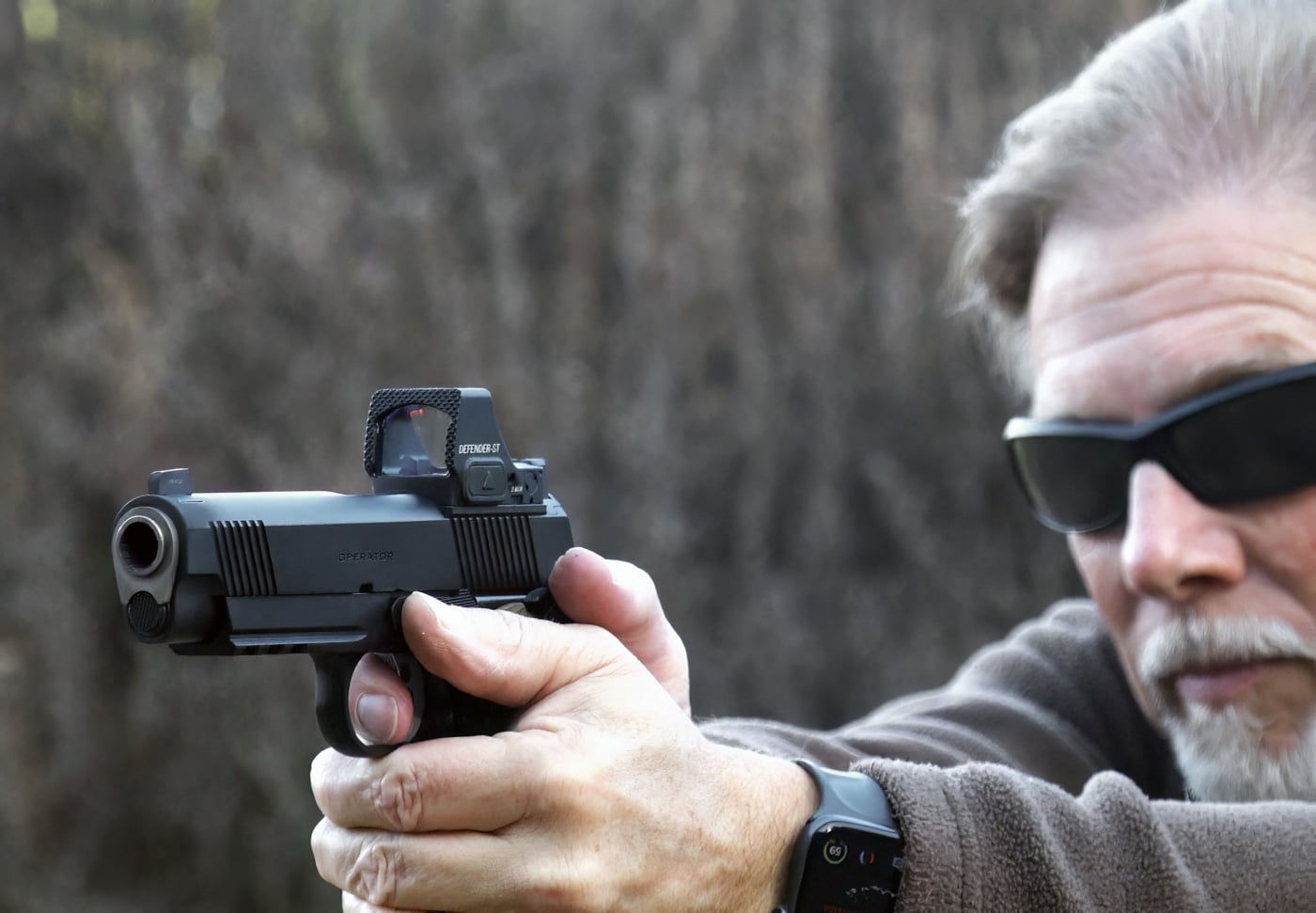
A perfect example of this alchemy is the new Operator AOS. More specifically, the 4.25” alloy frame version of the Operator. For ages, Springfield Armory has been making some of the very best production 1911s in the industry. The Operator model is a purpose-built handgun designed to be tough and reliable without skimping on the best features or high-quality craftsmanship. With the new offering we can now choose one with a 4.25” barrel and an alloy frame. This makes the gun shorter and lighter, which in turn makes it a great choice for carry.
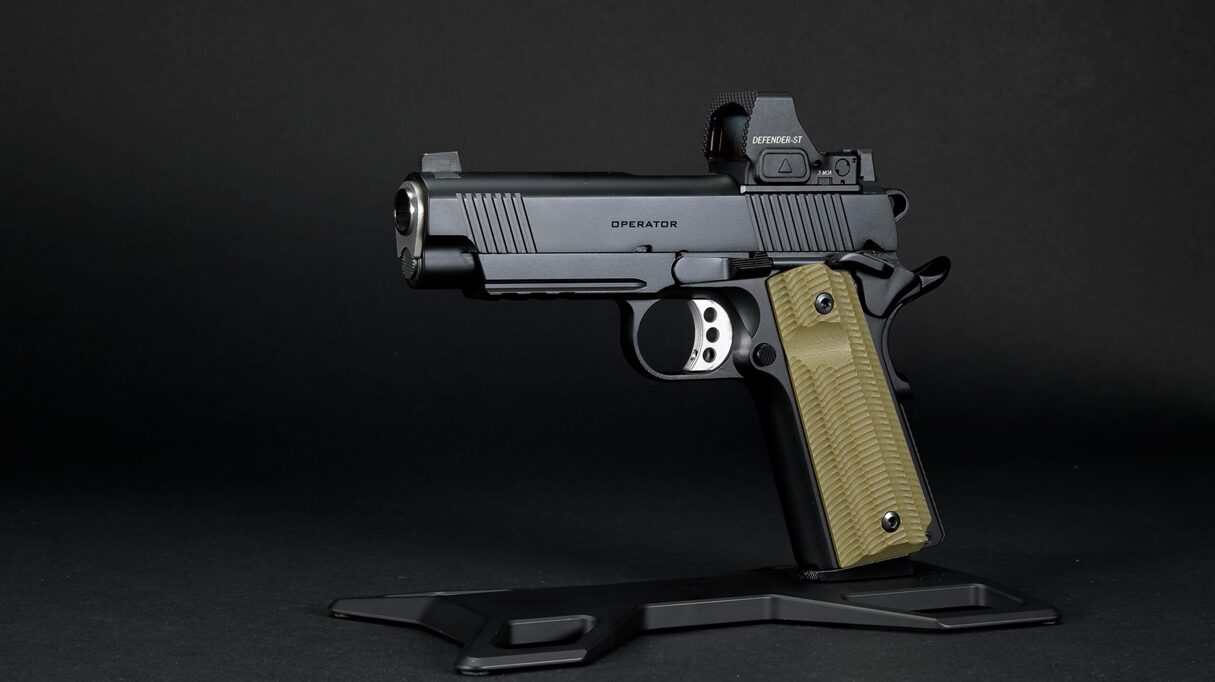
I tested the new 1911 Operator 4.25” AOS in .45 ACP. It is also available in 9x19mm Parabellum, and both calibers can be had in a full-size 5” Operator AOS.
The Agency Optics System (AOS) Factor
But smaller and lighter is not the only significant change to the Operator here. It is the latest pistol to offer Springfield Armory’s excellent AOS configuration. “AOS” stands for Agency Optics System. It was designed in collaboration with Agency Arms, and it takes “optics ready” to a new level. Here’s how it works:
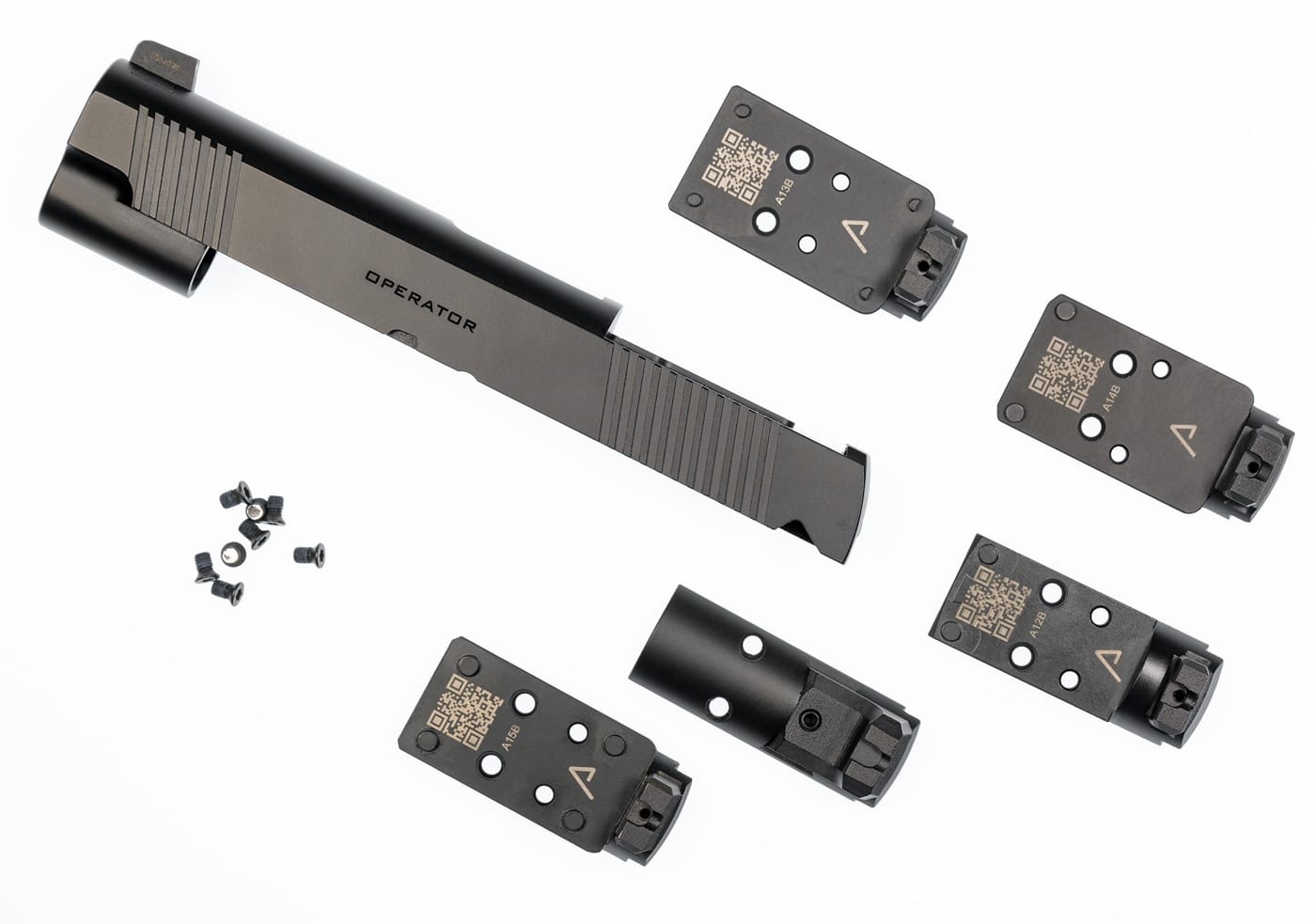
The gun comes out of the box with its cover plate installed. The cover plate fits the shape and finish of the pistol perfectly. If you want to run irons only, you’re not trading off the nice looks of the 1911. When the cover plate is removed, the rear sight goes with it. The sight is dovetail mounted directly into the rear of the cover plate itself. Usually, this would be a negative for me because I’ve worked with other guns that leave me with no rear sight at all when I remove the cover and install my optic. But that’s where Springfield and Agency Optics knocked it out of the park — each adapter plate has its own installed rear sight on it. Each sight is sized to best correspond to the optics that will fit that particular adapter plate, i.e. the plate for the Trijicon RMR HD has a sight that is the right height to co-witness with the RMR HD — and so on.
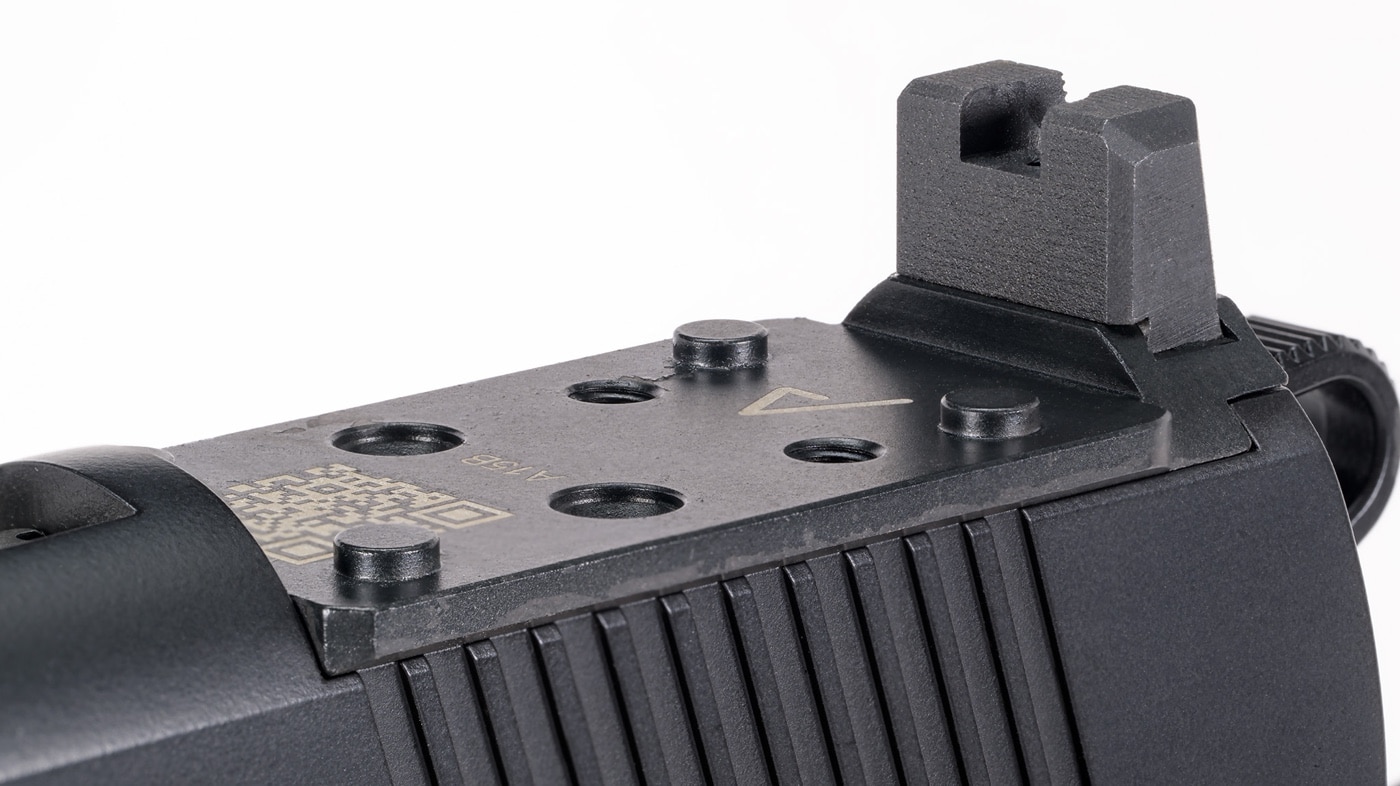
When it’s time to mount the optic of your choice, you can simply visit the Springfield Armory online store and choose the one you need based on the provided compatibility chart.
The plates themselves are milled finished steel with an index number that corresponds to the compatibility list. The rear sights are all dovetail mounted, which means they can be replaced if necessary. One might be tempted to stop the description there, but there is another element to the system that is my personal favorite.
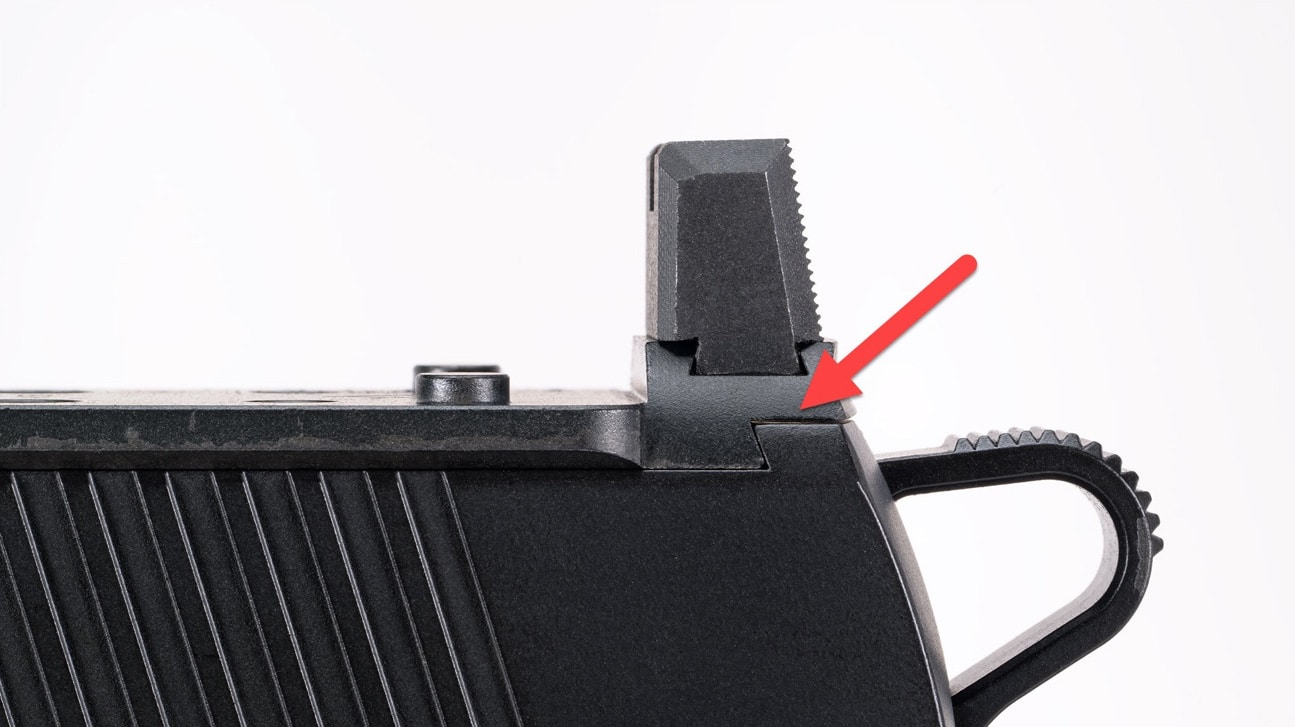
In addition to a key and keyway fitting system, each plate locks into the slide at the rear in a dovetail cut. This ensures a stable and strong installation and helps take the stress away from the mounting screws. It also helps to ensure that your zero stays put.
The Agency Optics Systems ensures compatibility with RMR, Shield, Delta Point Pro, and Docter — just to name a few of the major names. And because most other brands use the footprint of one of those mentioned, the list is long.
Co-witnessing a red-dot with the iron sights is a prerequisite for me if I am to mount an optic on any gun intended for serious use. That would include at minimum: Home defense, carry for personal defense, or competition. As fantastic as electronic sights are today, things fail. Batteries die. And always when the stakes are highest! The AOS configuration allows the normal sight picture to be seen through the lens of the optic in such cases, keeping you on target when it counts. To illustrate this, the accompanying photo is what your eye sees when the dot goes out.
Going Beyond the Optic
Getting back to the concept of preservation of the sacred design, the Operator 4.25” AOS is a compact 1911 built for defense. Whether the nightstand drawer, the duty holster, or inside the waistband under concealment, the Operator 4.25” is ideal for the task. There is a Goldilocks aspect to the build of the Operator — nicely appointed with just the right boxes ticked.
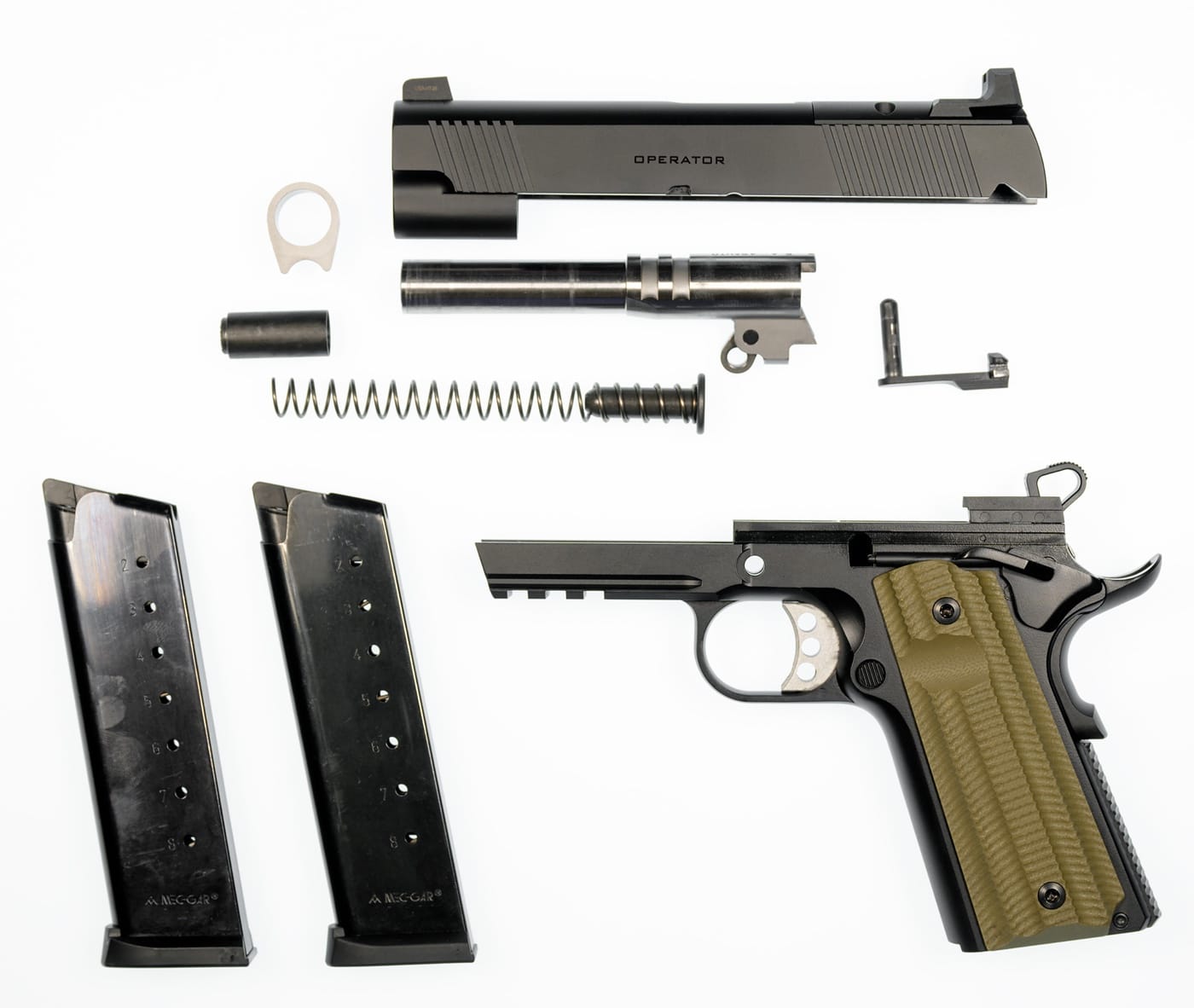
The model 1911 is, of course, a single-action only handgun with a legendary trigger. Springfield Armory has tuned the trigger to be neither too light for a defensive gun or too heavy and affect accuracy. My test copy measured in the “just right” range — averaging 5 lbs., 3 oz. in five pulls. The alloy trigger shoe is skeletonized for light weight. As mentioned, the frame of the Operator 4.25” is an aluminum alloy, unlike the full steel frame of the full-sized Operator. The gun tips the scale at 31 ounces, including an empty 8-round magazine — two of which are provided. That’s a whopping 11 ounces less weight versus the full-sized Operator AOS. The stainless-steel match grade barrel is accompanied by a G.I. spec guide rod and recoil spring. It does a nice job of managing the recoil of the .45 ACP round in this relatively lightweight gun. Additional recoil is one of the common concerns people have with alloy frames and shorter slides — but I found this a non-issue during my extensive range work.
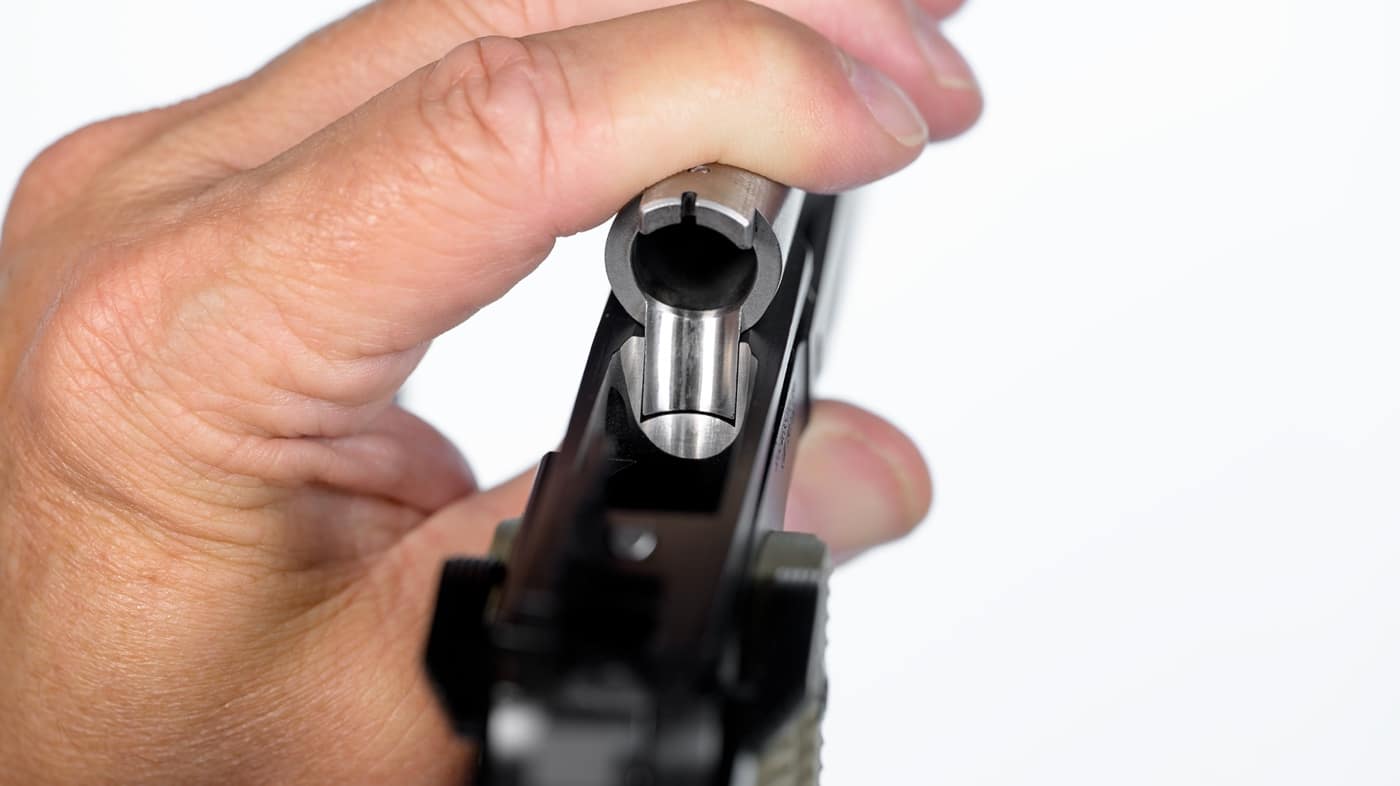
An interesting design element of the 1911 Operator 4.25” pistol is the choice that Springfield’s engineers made to put a fully supported ramp on the barrel. This is one example where the fundamental design has been significantly altered. The way the barrel ramp fits into the notch in the frame is a thing of beauty. The frame includes an oversized and polished “pre-ramp” which seems to seamlessly give way to the barrel ramp. I was concerned whether the two-part ramp would cause any feeding problems during live fire. The seam between the two parts is very tight, and with several hundred rounds fired during my tests I did not experience a single malfunction with it. This includes shooting some very aggressively designed hollow points.
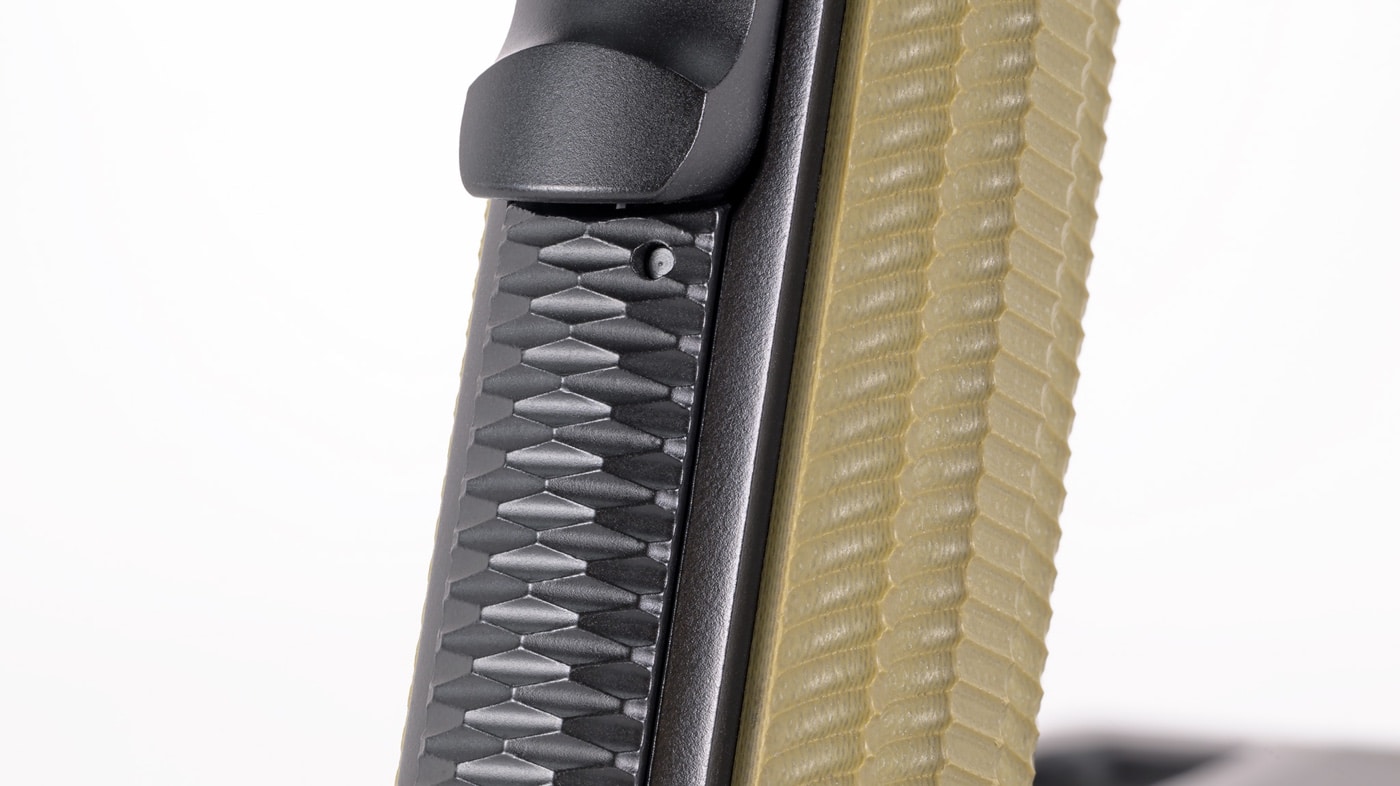
The Operator AOS 4.25” is equipped with an ambidextrous thumb safety, making it very south-paw friendly. And even for us right-handers, there are times when I’m shooting weak-hand only in a match or a drill and it is truly appreciated. A Picatinny rail on the dust cover allows mounting of lights or other accessories. The grip panels are G10 material with a nicely scalloped pattern and generous thumb cut and are made by VZ Grips. Together with the diamond style backstrap texture, the shooter can expect a firm, slip-free hold. The front strap o the Operator has been left smooth — another homage to the traditional Browning design. This allows you to grip the gun as hard as you like without the discomfort that many people experience with checkered front straps.
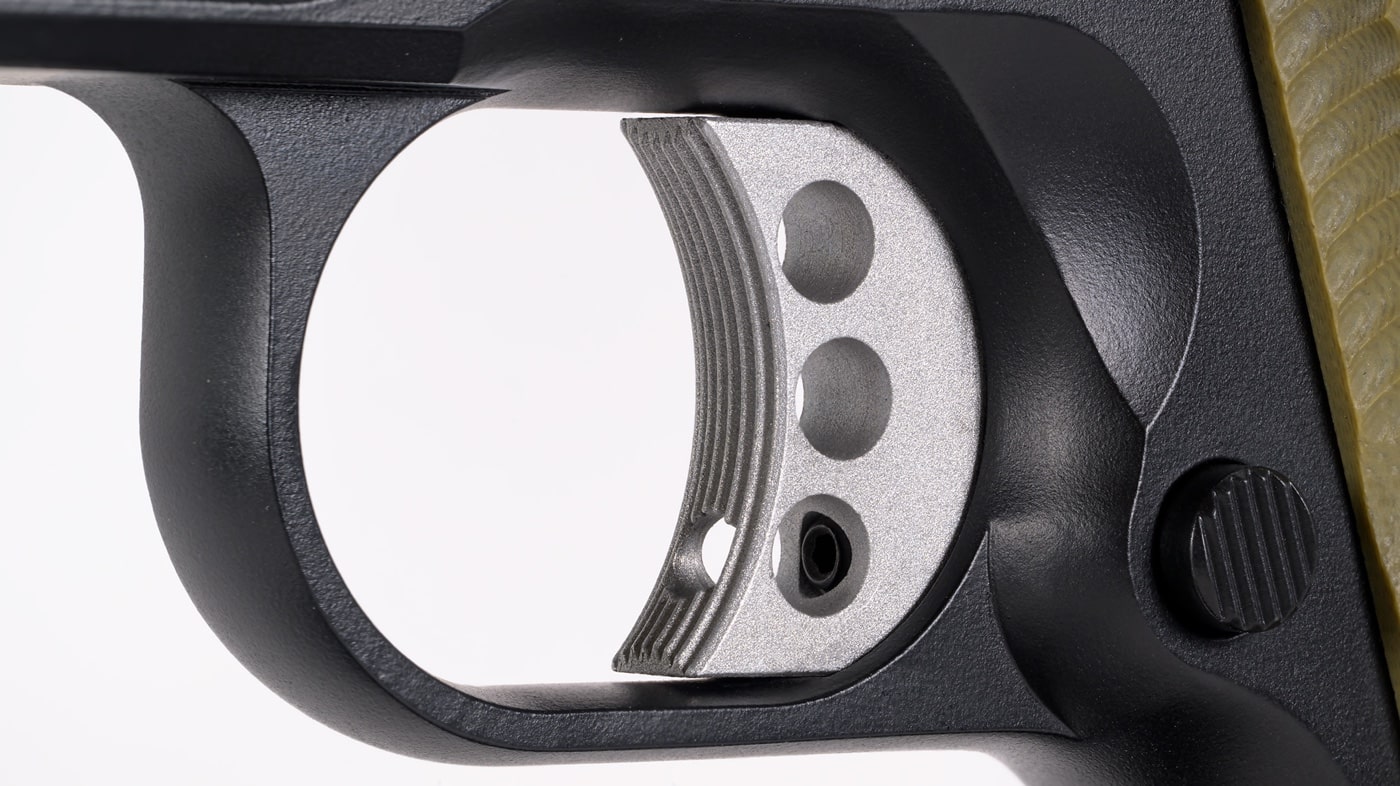
[Don’t miss Robert Sadowski’s article What Is G-10? for more information on this material.]
It’s easy to overlook stock sights on an optics-ready pistol, but Springfield did not. I’ve talked about the rear sight being integrated into the cover plate and each available adapter plate. These rear sights are very high quality — serrated and blacked out, with Springfield’s signature U-shaped notch. It provides both fast acquisition and the ability to take careful aim. Another Goldilocks component. Out in front, the sight is tall enough for optics co-witnessing and contains a tritium dot for no-light situations. The surrounding white ring makes for great daylight visibility.
Springfield Armory 1911 Operator AOS Specifications
| Caliber | .45 ACP |
| Barrel Length | 4.25″ |
| Overall Length | 7.9″ |
| Height | 5.25″ |
| Weight (empty mag) | 31 oz. |
| Rifling | Lands and grooves at 1:16 |
| Sights | Tritium front / black serrated rear |
| Action | Single action only |
| Mags included | Two (8 round) |
| Capacity (standard mag) | 8 |
| Width | 1.4″ |
| Trigger Pull | 5 lbs. 3 oz. (measured) |
| MSRP | $1,184 |
Shooting the 1911 Operator 4.25″ AOS
At the end of the day, regardless of bells and whistles, it comes down to shooting the gun. I made multiple range trips with the Operator 4.25 AOS and threw hundreds of rounds of lead downrange. I shot everything from top-quality defense ammo to standard ball ammo, and even some bargain bin stuff. Performance with the pistol was excellent, regardless. Most of my range testing was simply shooting off-hand at an array of steel targets — ranging from 13 to 17 yards. It was easy to keep a fist-sized group going on the steel plates while shooting at a relaxed pace. When I got frisky and picked up speed, the groups were not as pretty, but they stayed on the plates with very few misses.
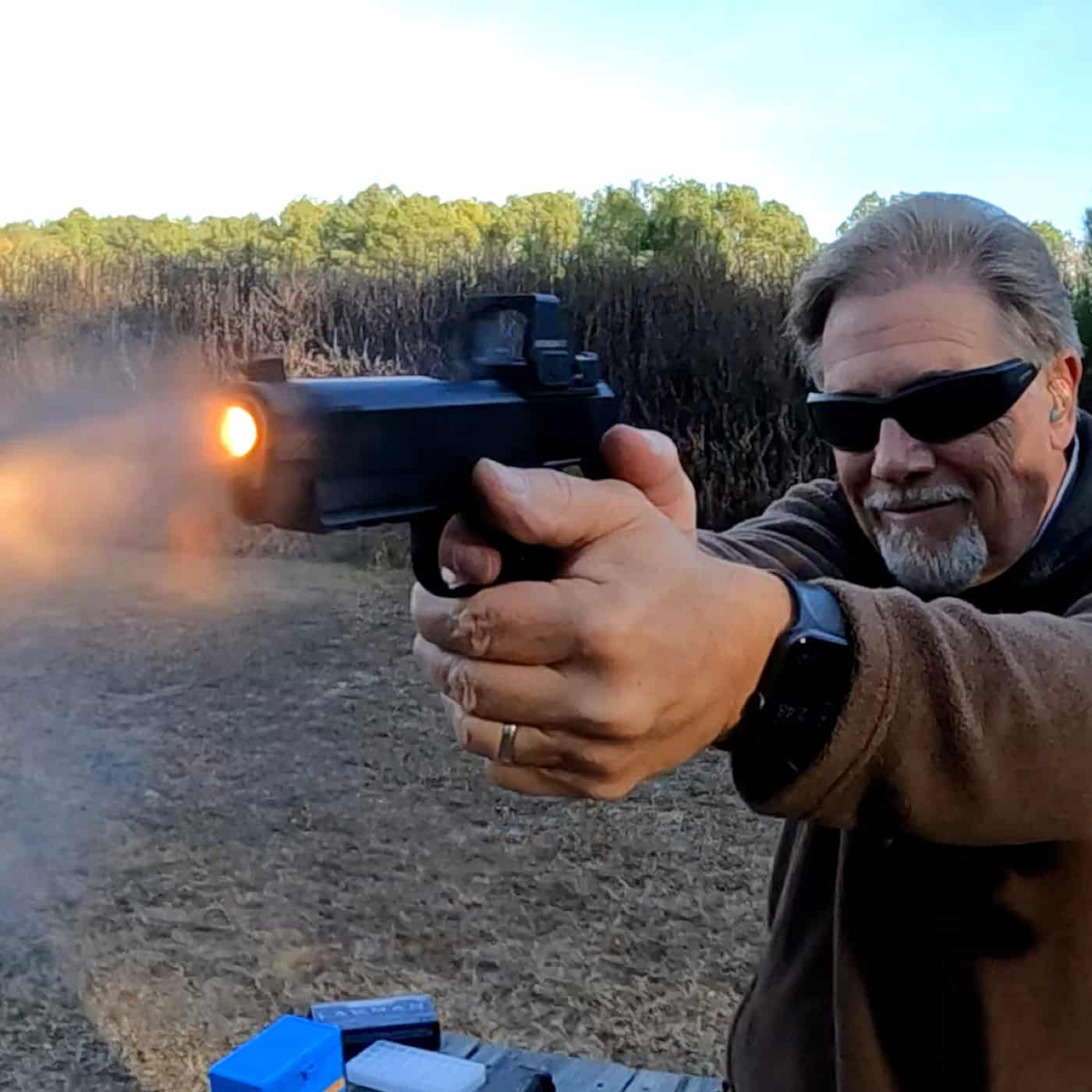
To quantify the performance more officially, I put several groups on paper at 15 yards, using a CTK Precision rest. Each round fired was measured for velocity with the Competition Electronics ProChrono to get the average for each group.
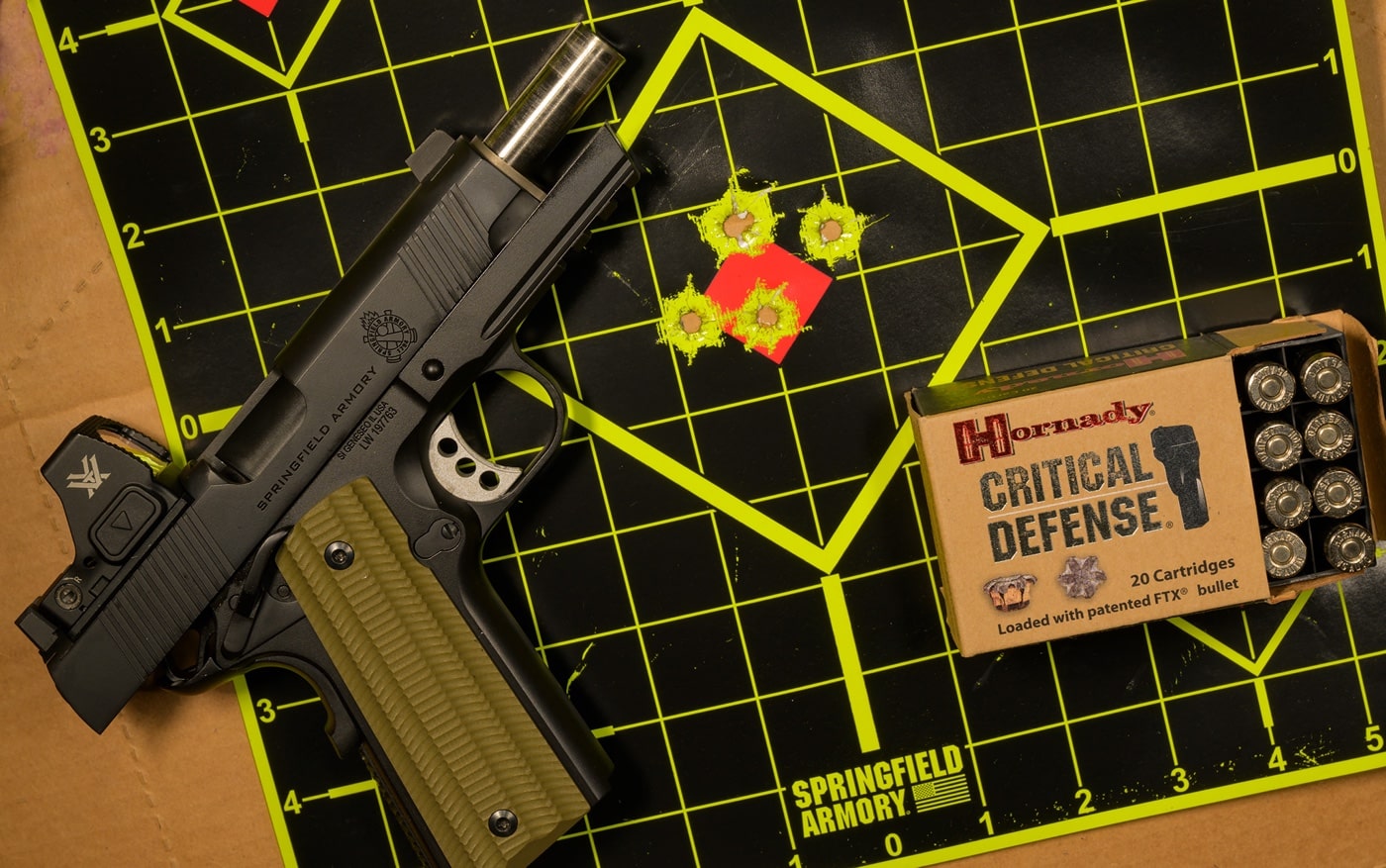
The ergonomics of the Operator 4.25 are of course, those the 1911 itself — but the nice touches of texture via the grips and backstrap, combined with the smooth front strap give the pistol a comfortable feel without sacrificing grip. The ambi safety switches are thin enough to make sense on a carry gun, yet easy to operate with the flick of a thumb. A nice positive click in each direction lets you know you’ve engaged or disengaged the safety. All this, combined with good recoil management, makes the 1911 Operator 4.25 AOS a joy to shoot all day.
Shooting Range Performance
| Ammunition | Velocity | Group |
|---|---|---|
| Federal 230-grain HST +P | 865 fps | 1.75″ |
| Hornady Critical Defense 185-grain FTX | 983 fps | 1.61″ |
| Speer Gold Dot 185-grain JHP | 934 fps | 1.98″ |
Conclusion
Choosing a model 1911 handgun for personal protection or duty use is nothing new. Many civilians and law enforcement professionals do so every day. The trick is to find the one that keeps up with today’s standards for options and equipment but maintains the rugged reliability of the basic 1911 design. That’s not as easy as it seems, but Springfield has found the right blend with the Operator 4.25” AOS. In this size, it’s suitable for both IWB or OWB carry, its alloy frame makes it lighter, and the superior AOS optics compatibility keeps it on the cutting edge.
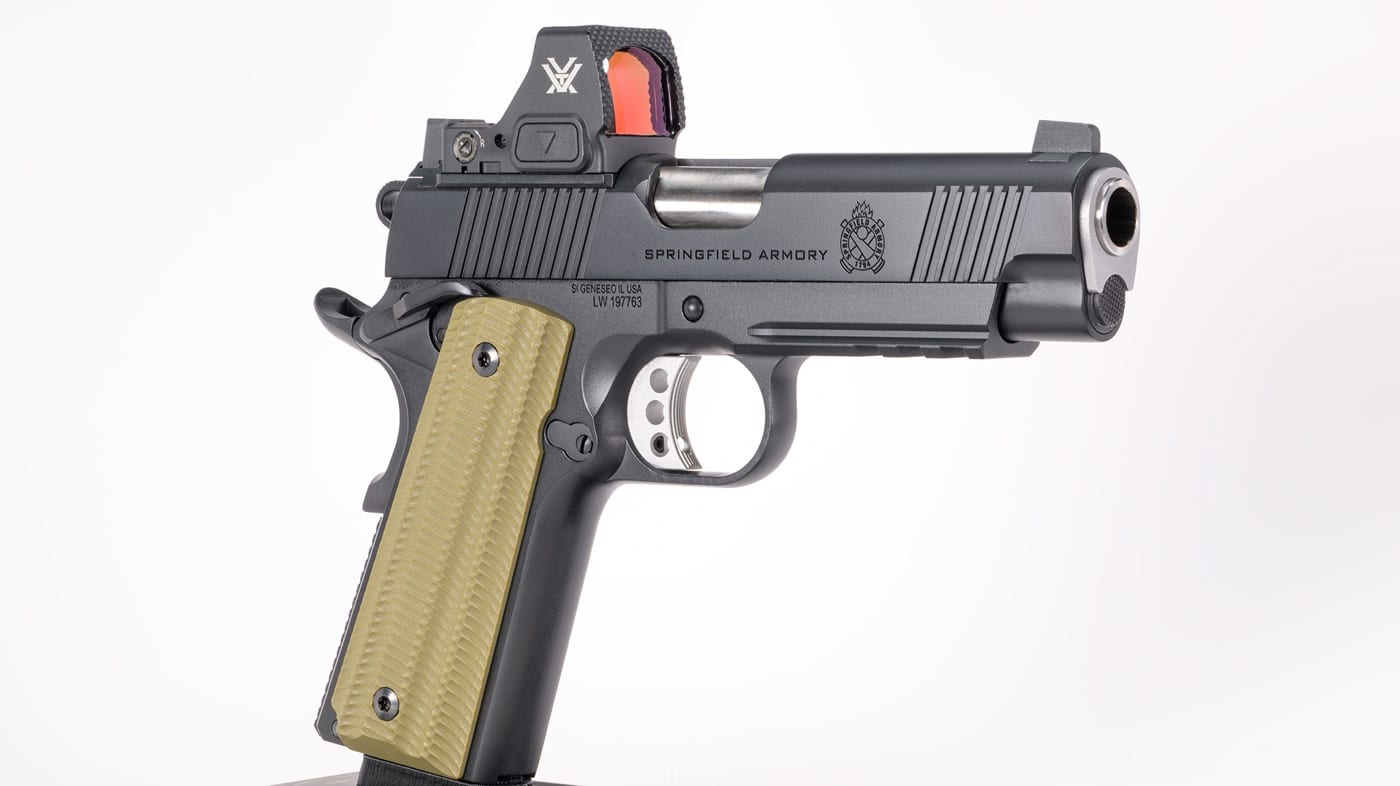
I like the fully supported feed ramp, which performed flawlessly in testing. I’m a fan of the Agency Optics System and the positive locking of the plate to the slide. And ultimately what really counts is the shootability of the gun. A gun you shoot well gives you confidence — and that’s essential for a defensive weapon. Springfield’s Operator 4.25” AOS punches way above its price point!
Editor’s Note: Please be sure to check out The Armory Life Forum, where you can comment about our daily articles, as well as just talk guns and gear. Click the “Go To Forum Thread” link below to jump in and discuss this article and much more!
Join the Discussion
Featured in this video
Continue Reading
Did you enjoy this video?

 142
142






